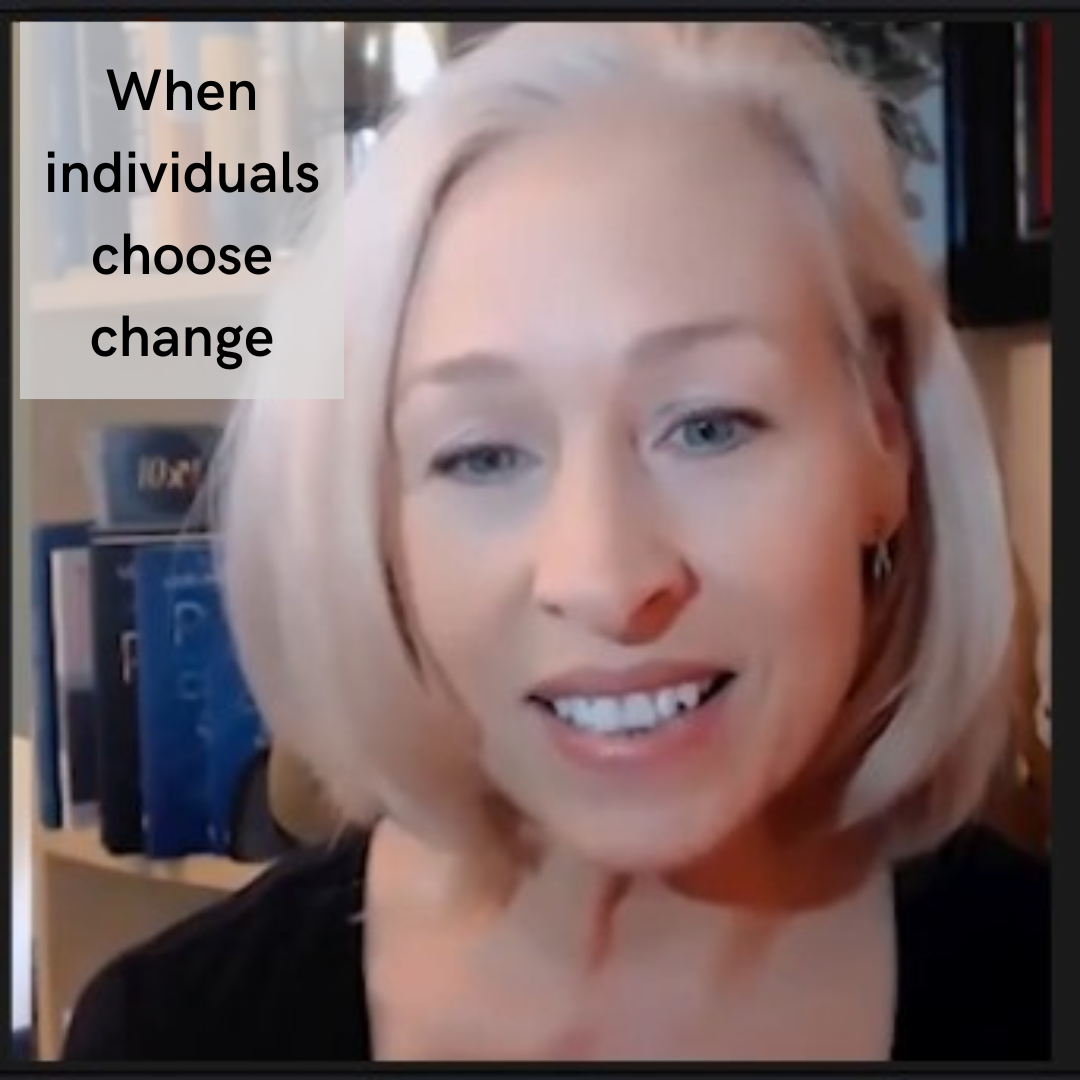You’re going to realize the change you want much more smoothly if people around you also choose change.
Let’s take the pandemic, for example. Change seemed, in some cases, so easy and quick. People were even choosing change that aligned with what the organization most needed at this time.
The realization of a Pivot is rarely fast!
Especially when there is not an unexpected and shared urgency (like with a pandemic), a significant change (a Pivot) isn’t quick. And Pivots not given some time, like the ones during the pandemic, often don’t last. People become overwhelmed with the pace of change
An orchestrated pivot, and a culture that stays aligned and empowered to shift and change so that the business remains vibrant, requires many shifts by many people over time.
Successful pivots are rarely fast!
Pivots and choosing to change — in 46 seconds
Here’s a quick video on this topic:
Change will go so much more smoothly if those on the journey with you choose change (in their way).
This takes a leader willing to orchestrate a more aligned and empowered workplace culture.
You can do it!
Whether you are the leader or you are waiting to speak up, have courage to do so.
The Pivot: Orchestrating Extraordinary Business Momentum
In Chapter 4 of my first book, I provide a few tips for starting this orchestration so that alignment is strengthened and momentum is gained. And I share a concept called Personal Brand Alignment.
Personal Brand Alignment is in place when an individual is aware of their own personal vision, values, and strengths (their brand), and how this (they) fit with what the role they are in requires of them.
Why would someone choose to change?
“Many shifts by many people…” won’t happen if there is resistance to change. You’ve heard from me the need to create a place that is safe to speak out and step up. That’s still important. Another powerful action you can take is to make it popular (i.e., something done throughout the organization on a regular basis) to know what matters to each individual.
It’s worthwhile to explore the alignment of what a person wants for themselves and sees about themselves (their personal brand) with how success in any one role is defined.
If you’ve already established safety in your culture, or at least between an individual and you or their manager, you might start with an interest in what their personal brand is. you might start by asking questions during 1-1 conversations. Your role is to listen, make sure they feel heard, and find out how you might support them. Here are a few example questions:
- Describe a time when you knew you were moving ahead on your success path.
- What characteristics or behaviors do you value, in yourself? Others?
- What skills or expertise do you value. Which of those do you have or want to grow?
- What roles do you see here that best fit the success path you envision?
- What is it about our organization that feels right for you? Anything that doesn’t feel right?
Give this a try if you are ready to orchestrate a workplace culture in which individuals choose to change.

Your best next step
For your “Your 1 Best Next Step,” consider your own personal vision, values, strengths, and what success means to you. This will better prepare you to listen with the desire to understand when asking others about change.

